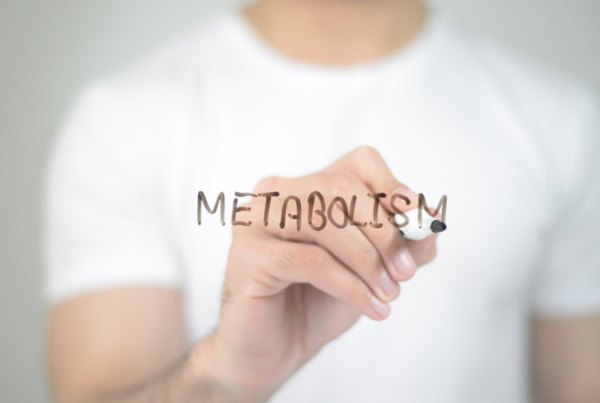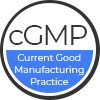By WellnessWiz Jack Tips [Ph.D., C.C.N.]
Perimenopause is a certain time in a woman’s life. It’s the transition from a lifetime of experiences and insights moving into the time of wisdom and applications of experience. It is not a disease or symptom. By the body’s innate design, the woman’s menstrual cycle will begin the preparations for cessation of menses.
The majority of female hormonal research has been on estrogen, with a dearth of research on the ever-important progesterone’s and testosterone’s roles in overall hormone balance so Science looks to the decline in ovarian production of estrogen as the specific milestone to label perimenopause as the situation that accounts for changes in the menstrual rhythm and flow.
Dr. John Lee pioneered the concept of Estrogen Dominance as the specific imbalance. This concept caught hold as more and more women sought out topical, bio-identical progesterone supplementation therapy. The question begged, was, “If it’s ovarian estrogen production that is declining, then why not use estrogen replacement therapy. Dr. Lee’s discovery was that even with declining estrogen, it was still dominant over a proper ratio with progesterone which also declined. Thus even with low estrogen production, estrogen dominance prevailed along with the many symptoms of that imbalance. [See Aging Gracefully Series #1: Estrogen Dominance: Female Hormones Out of Sync.]
While many practitioners prefer to help facilitate innate hormone balance, the lessons from bio identical hormone replacement pointed to a potential fallacy in estrogen replacement – an imbalance that can lead to unwanted cell proliferations, flushes of heat with perspiration, foggy thinking, and menstrual flooding.
Domino Effect: Today when a woman reaches the prime time for perimenopause around age 45-50, various discomforts and irregularities often start the quest for solutions. To get the best solution, we must first understand the individual woman because there are many influences that become causes and/or contributors to the discomforts of the process.
Today, the societal trend is for girls to have menarche earlier than in the past. Historically, the first menses could be as late as 16 years of age. Today, menarche can occur at age 11. Breast development can begin at age 7. An early start to menses can mean an earlier perimenopause. Many reasons for earlier menarche have been cited, one being the growth hormone residues in commercial meat and milk products. Science cites early menarche as a factor in several diseases as well as the environmental chemical toxins called estrogen mimics.
Next we find that many women were treated for cramps and acne with birth control drugs. Instead of seeking a cure for the cause, they opted for second best—suppression of menses and then release of the suppression, often without regard for the lunar cycles. In some cases, women were given the synthetic hormone progesterone, Progestin, to stop the monthly cycle for 3-6 months.
All of such suppressive treatments can interfere with the normal, natural rhythms; confuse the hypothalamic-pituitary-ovary and adrenal axis of hormonal regulation. So when perimenopause occurs, the brain and glands can fail to communicate efficiently allowing hormonal confusions which is tantamount to symptom expressions.
Key Factors Of Hormonal Self-Regulation
Four key factors in hormonal self-regulatory function are: 1) the brain’s oversight, 2) the gut microbiome, 3) the primary endocrine glands (adrenal, pituitary, thyroid), and 4) the liver.
- The brain itself has estrogen and progesterone receptors. When estrogens and progesterone are artificially manipulated by synthetic hormones, dysregulations often result as evidenced by the difficulties many women have after stopping synthetic therapies to regain their natural rhythm.
- The gut microbiome conjugates estrogens and progesterone and provides cell membrane sensitivity signaling molecules to support hormonal balance. Today woman’s gut microbiome has often been severely compromised by the use of antibiotics, excessive dietary sugar, presence of antibiotics in commercial meat and milk products, lack of fibers, and use of synthetic hormones.
- The thyroid sets the tempo and energy for the female lunar cycle, and the adrenals step in to support the brain’s and cell’s needs for estrogen and progesterone. Hypothyroidism and adrenal fatigue (the effect of prolonged) directly impact hormone balance.
- The liver conjugates estrogens and detoxifies estrogens to help maintain hormonal balance. The impact of the toxic environment and many of the skin- beauty products on the market add toxins, neuro-toxins and hormone disruptors that overburden the liver. Further, as many people find through gene testing that they have impaired capabilities of the CBS and MTHFR genes, years of poor self-purification pathways impair the liver’s hormone regulatory duties.
The point is this: the perimenopause experience is built upon the menstrual life of prior years. If a woman has lived a natural life, free of synthetic hormones (by foods or drugs), has avoided plastics and chemicals (hormone disruptors), and effectively addressed prior menstrual issues allowing the body to effect proper balance; then perimenopause should run smoothly or simply require some adaptogenic herbal support.
For women with a history of dysfunctions in the four key factors above, a more comprehensive program is often necessary, e.g. 1) ensure that brain “neuro-connectivity responses and neurotransmitter cascades” are efficient, 2) support an optimal gut microbiome, 3) support the liver function, improved.
For thousands of years, herbs and nutrients from herbs and foods have been employed to ease a woman’s journey through the hormonal phases of life. Some examples include:
- Dong Quai or Dang Gui (Angelica gigas nakai) is a Korean with emerging research pointing to it’s ability to support the brain’s acetylcholine/memory processes, thus not only serves as an adaptogenic female hormone botanical, but also serves the support of the brain’s normal neurological functions including memory.
- Humulus lupulus, or hops herb, has caused scientific excitement as research studies demonstrate that it helps inhibit the oxidative estrogen metabolism which is an unwanted process that can raise the level cell- proliferative process. Historically, hops have served as a primary female\ tonic with support of normal estrogenic activities and support of normal menstrual processes.
- Phlomis umbrosa. (Cynanchum wilfordii) An historic Traditional Chinese Medicine herb employed to support the body’s normal natural estrogen/progesterone balance, normal natural follicle stimulating hormone activities, normal natural estrogen (estradiol) receptor sensitivity, and normal natural human growth hormone activities.
- Vitex Agnus-Castus. From the European herbal tradition, the chasteberry tree is associated with female hormone support. Hippocrates, the father of natural medicine, and other great herbalists including Theophrastus and Dioscorides cite the virtues of Vitex for uterine support and the hormonal fluctuations of childbirth. Science finds that its volatile oil supports progesterone’s normal impact on cellular epigenetic functions, as well as being supportive of normal Luteinizing and Follicle Stimulating Hormone activities. Many clinicians find that combinetic formulations featuring a broad array of nutritive and botanical influences, all focused on supporting female hormone balance, provide the benefits and minimize any side effects, thus acclaim the success of patent formulas to smooth the woman’s hormonal life journey.
Key Formulas:
- Femicrine
- Neurosyn
- L, Ls
- Cell Detox
- Gf
- Ga
- Gb
- ABC/MBC






